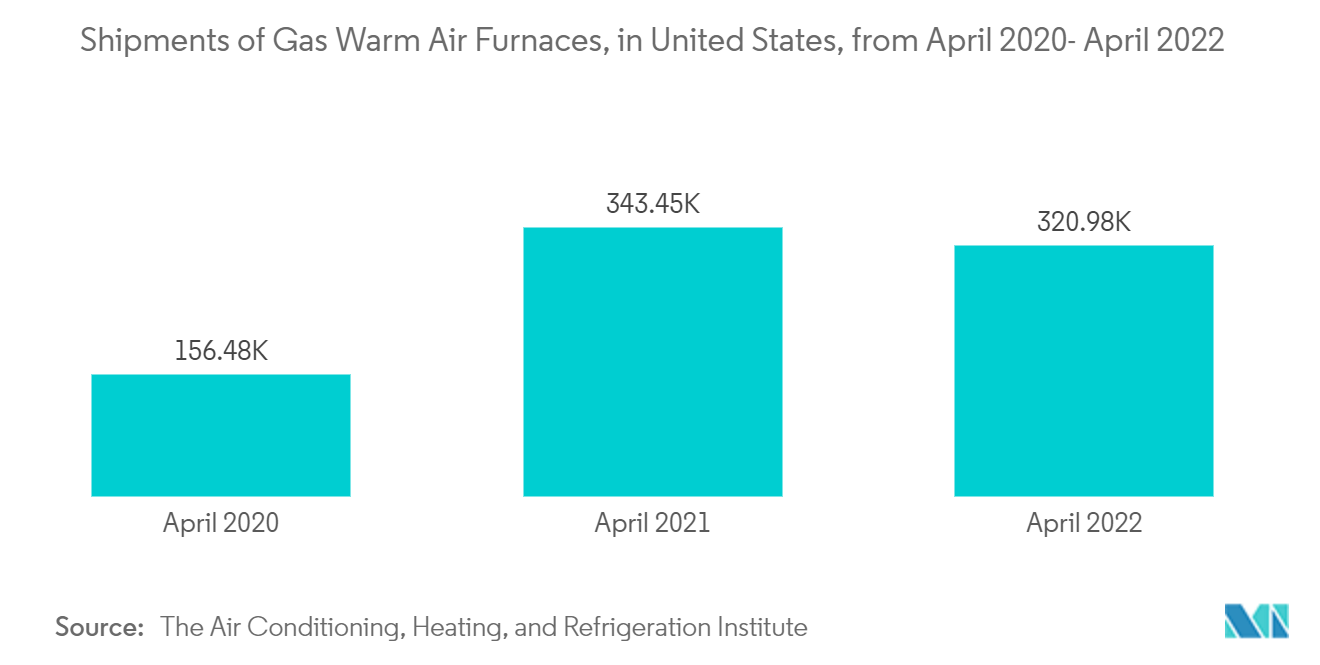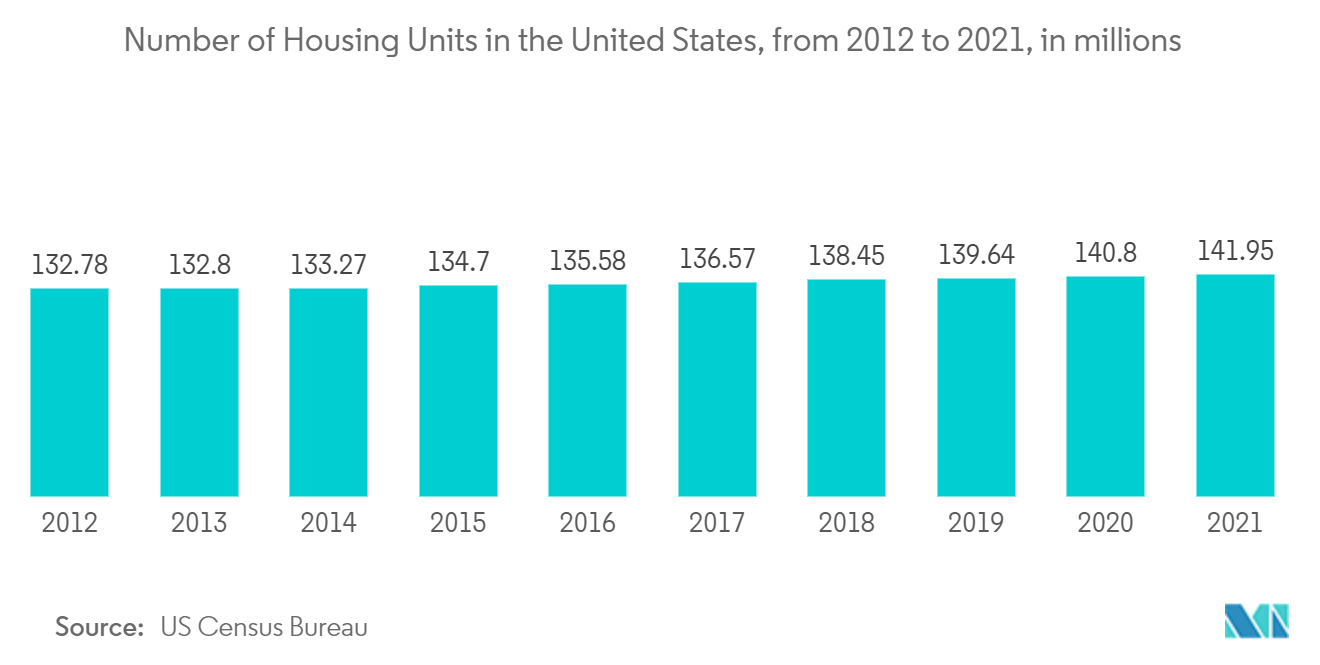Market Trends of United States Air Furnaces Industry
This section covers the major market trends shaping the US Air Furnaces Market according to our research experts:
Gas Furnaces to Hold a Major Market Share
- Gas-fired furnaces are the most common type of air furnaces in the US and utilize natural gas as their primary source of fuel. The natural gas is ignited in the furnace, warming up the air, which is then distributed through ducts to various parts of a building or the home.
- Further, owing to the direct generation of high-temperature combustion gas, which is directed through a heating chamber by using an air blower, a natural gas furnace heats up quickly.
- Natural gas is a very affordable fuel source in the United States. It is also clean and efficient. Moreover, gas furnaces are required to have a minimum AFUE (Annual Fuel Utilization Efficiency) rating of 90% in Southern US and 95% in Northern US, as per Energy Star, making them high-efficiency appliances.
- In January 2021, Nortek Global HVAC launched the premium SD Series, a 95% AFUE, ultra-low NOx residential furnace that offers easy installation/service features. The single-stage, upflow/horizontal, natural gas-fired furnaces are available from the company's Frigidaire (FG8SD) and Maytag (MGC3SD) brands.
- While natural gas furnaces can be slightly more expensive than oil furnaces, they are easier to maintain. However, gas furnaces carry the danger of carbon monoxide leaks, making it necessary to install carbon monoxide detectors.

Residential End-User Sector to Grow Significantly
- The growth in the US construction sector coupled with the rise in the demand for independent houses fuels the market growth in the residential sector, as air furnaces are extensively used in residential buildings to regulate the temperature in winter and summer by providing consistent air circulations.
- The US housing sector is picking up at a fast rate, recovering from the effects of the pandemic. As per the data released by the US Census Bureau, new home construction starts in February 2022 increased by 22% compared with the same period in the previous year. This is the fastest growth rate in building since 2006.
- Temperature variations in U.S. regions result in extreme hot or cold weather, which stimulates the demand for residential air furnaces. Air furnaces have much faster start times, as compared to hydronic heating systems, and can quickly provide comfort to the entire home.
- The use of air furnaces can also improve indoor air quality significantly. Many furnaces are equipped with humidification, which allows for the removal of a lot of indoor air contaminants and humidity problems that can cause property damage and health problems. These factors also contribute to the market growth.
- The trend of using energy-efficient air furnaces is also growing with the implementation of new energy norms. For instance, in June 2022, the US Department of Energy (DOE) proposed new energy-efficiency standards for residential gas furnaces that would significantly reduce greenhouse gas emissions and provide more savings for consumers on their energy bills.


